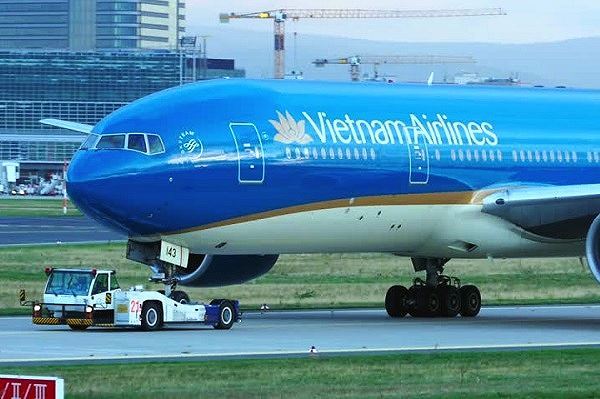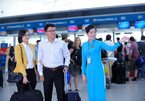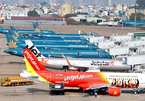 |
Duong Tri Thanh, CEO of Vietnam Airlines, told VIR’s Duc Oanh about the strategy to turn the national airline into an internationally recognisable brand, characterised by Vietnamese traditional culture.
How do you evaluate the potential of the aviation market connecting Vietnam to Europe and the UK in particular?
In the first six months of 2019, the total number of arrivals is estimated at 980,000 passengers between Vietnam and Europe, and 150,000 passengers between Vietnam and the UK, up 38 and 4 per cent, respectively, on-year.
There has been a huge development in aviation between Vietnam and Europe, as well as the UK, due to a boom in tourism. Vietnam is also one of the most dynamic and fastest growing emerging markets in the East Asia region.
The Vietnam aviation market is growing at a rapid pace, but so is competition from low-cost carriers and foreign airlines, as they currently have their sights set on long-haul flights and are potentially seeking to expand their direct networks.
How many flights have Vietnam Airlines been operating between Vietnam-EU and Vietnam-UK? Could you share with us your plan for the next five years?
Networks and seamless connectivity are the keys to better customer experience. We operate four routes to Europe including London, Paris, Frankfurt, and Moscow, in which we are the only carrier offering frequent direct flights to and from London, Paris, and Frankfurt on new-generation Boeing 787 and Airbus A350 aircrafts. We have been dynamically expanding our network in terms of destinations, frequency, and capacity, as well as through joint ventures, and code-share co-operation with 26 different airlines. This helps to enhance connection to domestic destinations and boosts Vietnam Airlines’ presence in foreign markets.
We are also the only Vietnamese carrier offering convenient connections between major destinations in Europe, Australia, Northeast Asia to Southeast Asia, and our domestic ones. As part of our strategy, we reinforce the places where we already have a strong presence, and make sure we have enough unique destinations for the company’s portfolio.
This year, Vietnam Airlines is on target to carry approximately 748,000 passengers between Vietnam and Europe, and 158,000 passengers between Vietnam and the UK. This is an on-year increase of 2 and 5 per cent, respectively.
Our UK route has continued to perform at the same high level as in 2018. In the first six months of 2019, we have carried approximately 88,000 passengers to and from the UK, while maintaining load factors of about 80 per cent. Vietnam Airlines is conducting new studies to improve our traffic mix with existing routes, as well as expanding to new destinations in the European market.
For the UK market only, have you focused on attracting UK investment into Vietnam and improving the transportation capacity of goods and passengers between the two countries?
Fueled by continuous growth, Vietnam continues to attract record foreign direct investment (FDI). FDI in Vietnam in the first five months of the year reached a four year high of $16.74 billion. I believe Vietnam is considered one of the most attractive markets for UK investors.
The EU–Vietnam Free Trade Agreement (EVFTA) will provide significant opportunities for both inbound and outbound investment for the next few years.
This, coupled with the UK’s withdrawal from the EU, has triggered a need for the former to seek a potential free trade agreement with Vietnam. This is expected to help expand bilateral trade and investment ties, and sustain our country’s economic growth.
As a four-star international airline, recognised by Skytrax - the world’s leading airline and airport rating organisation - Vietnam Airlines will continue to implement comprehensive development, both onground and en -route to the UK, driven by the significant increase in trade and travel demands.
Vietnam Airlines’ annual report carries the message: “The world is changing, are you?” which highlights the plan to build a “digital airline”. Can you tell us more about this plan?
As a global air-transportation company, we have to operate and co-ordinate strictly with various agencies from the ground to the air, in order to create the safest flights and best service. Vietnam Airlines has always focused on investing in the latest IT.
Through Industry 4.0, updating and applying new and modern information technology has become a pressing and necessary requirement. Now more than ever, it is a factor that determines the effective productivity, operation, and competitiveness of all airlines, and Vietnam Airlines in particular.
Vietnam Airlines, therefore, is aiming to develop into a “digital airline”, which invests strongly in extending the IT application in all aspects of its operations.
Currently, we have successfully operated new generation technology systems to manage most key fields, including trade, service, exploitation, finance-accounting, and administration.
Typical technology solutions include flight management systems, passenger ticket booking system, revenue management system in the commercial sector, and the Vietnam Airlines mobile application.
Particularly, in the field of flight exploitation, we have achieved great steps with the application of electronic flight applications, helping pilots and stewardess easily access and update meteorological, weather, and technical information from a tablet, instead of printed documents as before.
In terms of pilot training, SIMCOM Aviation Training provides professional simulator training at the highest profession level, while saving both time and money. Vietnam Airlines is co-operating with such world-leading IT partners like Sabre, Airbus, and Boeing, to research and implement many projects of upgrading and applying IT management solutions.
Could you make a comparison of the Return On Equity (ROE) between Vietnam Airlines to other airlines in Japan, Singapore, Thailand, and South Korea?
Vietnam Airlines has established itself as one of the region’s leading airlines thanks to its modern fleet and commitment to innovation and development, earning recognition from international and national communities through a series of prestigious awards.
Skytrax has ranked Vietnam Airlines as a four-star airline for four consecutive years. Vietnam Airlines was also named Asia Pacific Airline of the Year by the Centre for Aviation (CAPA) in 2017 and earned several awards from the World Travel Awards, including World’s Leading Airline – Premium Economy Class; World’s Leading Cultural Airline in 2017 and 2018, and Asia’s Leading Airline – Economy Class in 2016. These achievements and more are the result of the carrier’s tireless dedication to providing the highest quality across a range of products and services.
With such flexible and proactive policies in managing and operating business, Vietnam Airlines’ profits grow sustainably year-on-year. Additionally, the capital from equity has made the ROE of the corporation grow.
According to the statistics of reputable financial institutions, the average, Vietnam Airlines’ ROE in the 2015-2018 period is about 13 per cent, higher than most regional airlines and higher than the average of all airlines.
Have you chosen other airlines as partners or extended your list to attract financial investors?
We need a huge capital source for meeting the production and business requirements, in order to extend Vietnam Airlines’ fleet in the 2019-2025 period.
We also have phased out a production and business development strategy, based on sustainable and digital technology application, with a vision to build Vietnam Airlines into one of the leading airlines in Asia.
Therefore, we appreciate all the co-operation and investment in Vietnam Airlines, especially from prestigious investors who share clear and suitable goals that align with our strategy. VIR

Vietnam Airlines launches Meet & Greet service
National flag carrier Vietnam Airlines has rolled out a Meet and Greet service through the Vietnam Airport Ground Services Company (VIAGS), a member of the airline.

Vietnam airlines’ expansion plans hindered by aviation authority’s limited governance capability
Vietnamese airlines are facing difficulties to carry out their plans to acquire new airplanes due to the limited governance capability of the Civil Aviation Authority of Vietnam (CAAV), Zing reported.
 Vietnam Airlines has spearheaded the country’s aviation market - one of the fastest-growing markets in the world - throughout 20 years of development, at a double-digit annual growth rate.
Vietnam Airlines has spearheaded the country’s aviation market - one of the fastest-growing markets in the world - throughout 20 years of development, at a double-digit annual growth rate.